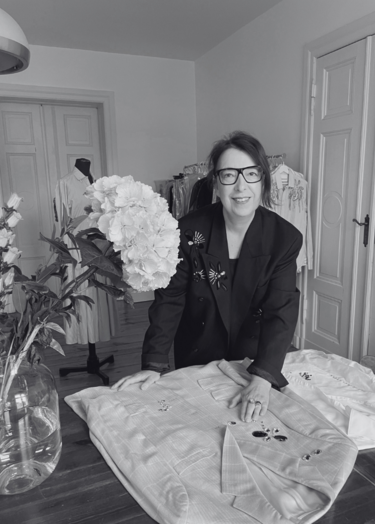
Interview

Trademark counterfeiting is a serious issue in the fashion industry. Every year, counterfeiting leads to losses running into billions. With the Berlin-based startup business LUKSO, the four successful fashion-tech entrepreneurs Silke Bolms, Sarah-Jane Godman-Boritzk, Marjorie Hernandez de Vogelsteller and Fabian Vogelsteller want to support the fashion industry in tackling trademark counterfeiting and piracy.
A specific chip is used to verify the authenticity and origin of products by assigning them a unique ID based on blockchain technology. The startup founders presented this innovative idea in January at the Berlin Fashion Week.
In our interview with co-founder Fabian Vogelsteller, who is also a well-known Ethereum developer from the blockchain sector, we spoke about the use of blockchain technologies in the fashion industry:
Mr Vogelsteller, how did you come up with the blockchain concept of LUKSO?
The specific idea developed from an exchange that my wife and co-founder Marjorie Hernandez de Vogelsteller and me had last year. In her work during the last few years, where she developed several blockchain use cases, she realized that here lies a great potential for the design and fashion industry.
You have a rather technical background, rather than fashion-related. Could you sum up what made you so well-known?
I worked in the Blockchain Space for three years and played a key part in developing tools and applications for Ethereum – the second largest blockchain. Moreover, I proposed the successful Blockchain Space standard “ERC 20 Token”.
Why do you think there is such a huge potential for using blockchain technologies in the fashion industry?
We at LUKSO know that the next step for all industries lies in joining in shared industry-specific networks. Blockchain is particularly strong where several parties who do not necessarily trust each other want to interact with each other.
The fashion industry is the ideal industry for a blockchain network, as it is forward-thinking and eager to try out new things, with interactions between the users being a key factor. In addition, counterfeit protection remains an unsolved problem so far.
How will the fashion industry benefit from blockchain technology?
Blockchain will make authenticity not only completely verifiable, it also creates a completely new field for innovation within the fashion and design industry. All future innovations will have to do with digital property. However, for this to be possible, we need a blockchain infrastructure everyone can trust.
In the future, every valuable item we buy will have its own digital identity that we will also own. They will provide us access, a particular status or token with a real value. It will also allow a bag to be clearly identifiable.
As a result, the collection itself and the fact that it is the first bag of a certain collection, information on who made it by hand and what materials were used will play a role. Furthermore, the history of its possession will generate a tremendous value.
It will further strengthen the influence of the user on brand popularity, as they can provide their followers with real values in the form of invitations, benefits and tokens. The possibilities are endless, and in the future, new projects and startups will be able to interact and experiment with these digital objects in the form of “smart contracts” on the LUKSO blockchain.
What makes the technology used by LUKSO so safe and effective in the fight against trademark counterfeiting?
The chips that we and other brands use are based on cryptographic methods one can use to authenticate, but not copy them. All this is based on public key encryption methods that are also the basis for blockchain.
The public LUKSO blockchain on the other hand serves as a permanent property register. As this can be verified by anyone, it is impossible to cheat in this system.
The user does not need to understand the details of this technology. Rather by using it over time, will help to build trust in the technology, just as it has been with the internet, ISDN line or like driving a car.